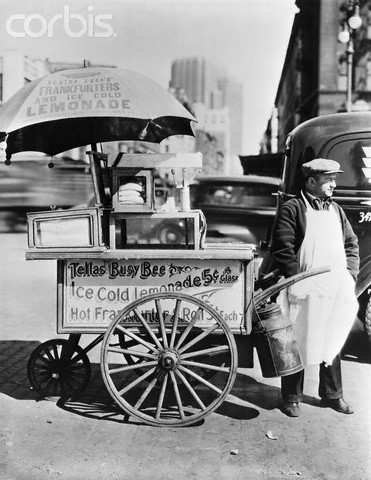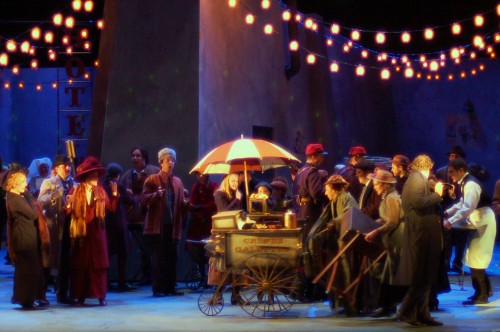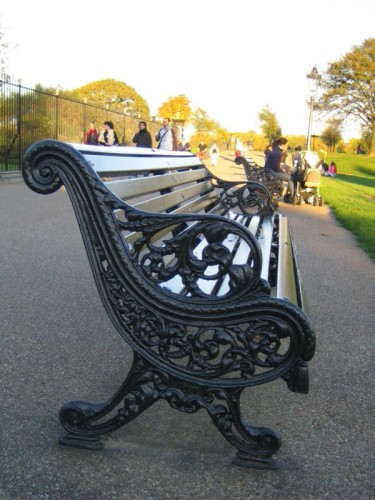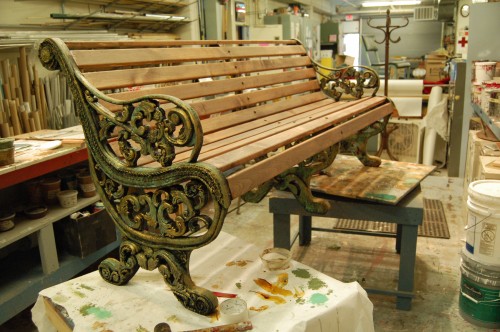When you are building a prop, you are often working off of some kind of reference material. In many cases, a photograph is the only reference you have. I’ve learned a couple of tricks over the years to help me construct a prop from a photograph.

The first thing you want to do is take note of all the details in the photograph to learn as much as you can about the context in which it was taken. Do you have a time, place, name of photographer or name of subjects to go along with your photograph? If you do, you can use it to search for additional photographs of the same object. For a production of La Boheme, I was given a poorly-photocopied image of a street cart vendor as research for a cart I needed to build. Using that image, I found the above picture online, which is a crisper and cleaner reproduction of the exact same photograph. If you’re lucky, your research will lead you to multiple pictures of the same object, showing different angles or details. Otherwise, do your best with the single image you have.
Next, you want to figure out the scale of the items in your photograph so you can begin assigning measurements and dimensions to the different elements. The above photograph offers one of the best items to scale against: the human body. By measuring against our own body, we can determine the heights of the various elements. The photograph of the crepe cart gives us a great advantage by showing the cart straight on. We can essentially lay a grid over the whole image using the man as the basis for the measurements. We know that the man uses the handles to push the cart, so we can use our own hands to decide the optimal thickness of the handles rather than trying to guess it from the picture.

(You’ll notice the cart in the photo above does not match the research exactly; the designer made some changes and alterations of his own based on the needs of the production.)
Sometimes the photograph has nothing in it to scale against, and we need another method. I had to build a park bench once based off of the research below. Though we do not know the size of that park bench, we do know the sizes of other park benches.

Most seats have a sitting height of eighteen inches. Even if the specific bench in the photograph above has a different height, the actors on stage will be most comfortable in an eighteen-inch high seat, so we can decide that this bench will have a sitting height of eighteen inches. Now that we have that measurement, we can again determine the rest of the measurements and draw out a full-scale version of what we are making. The length of the bench is a little harder to determine. For that, we can defer to the needs of the production (by asking how many actors need to sit in it at one time, and what the maximum length the set will allow is) as well as the length of typical park benches to come up with our length.






